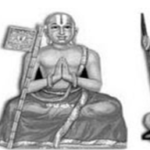Introduction
Pitra Paksha, also known as the fortnight of ancestors or Shradh, is a sacred period in Hindu tradition dedicated to honoring and paying respects to our departed ancestors. This 16-day observance holds profound significance, offering an opportunity to connect with our roots, seek blessings from our forebearers, and express gratitude for their contributions to our lives. In this blog, we will delve into the importance of Shradh, the rituals involved, and the deeper spiritual meaning it holds. We will also explore some Sanskrit mantras commonly recited during this period, along with their meanings.
The Significance of Pitra Paksha and Shradh
1. Connecting with Ancestral Roots
Pitra Paksha, which usually falls in the Hindu month of Bhadrapada (September-October), is a time when families come together to remember and pay homage to their ancestors. It is believed that during this period, the souls of the departed ancestors visit the Earth plane, and performing Shradh rituals allows us to connect with them.
2. Seeking Ancestral Blessings
Shradh is not just a ritualistic practice but a heartfelt gesture to seek blessings from our forebearers. It is believed that when we offer food, water, and other offerings during Shradh, our ancestors’ souls receive nourishment, blessings, and positive energy, which, in turn, can benefit our lives.
3. Expressing Gratitude
Shradh serves as an opportunity to express our gratitude to our ancestors for the foundations they laid, the values they instilled, and the love they bestowed upon us. By acknowledging their role in our lives, we recognize the continuum of their influence.
4. Clearing Ancestral Debts
Hindu philosophy suggests that our ancestors may have unfulfilled desires or unfulfilled karmic debts. By performing Shradh, it is believed that we can help clear these debts and bring peace to the souls of our ancestors.
5. Balancing the Pitru Dosha
In Vedic astrology, it is believed that the malefic influence of planets like Rahu and Ketu can be attributed to Pitru Dosha, which may result from the unsatisfied desires or unfulfilled needs of our ancestors. Performing Shradh is thought to alleviate these doshas and bring harmony to the family.
The Rituals of Shradh
Shradh rituals vary in complexity and detail, with some families performing simple ceremonies at home, while others may choose to do elaborate ceremonies at sacred sites. Here are the core components of a typical Shradh ceremony:
1. Tarpan (Offerings)
During Shradh, offerings of food, water, and other items are made to the ancestors. These offerings are placed on banana leaves or special plates and presented with devotion. It is believed that the souls of ancestors consume the essence of these offerings.
2. Pinda Daan
Pinda Daan involves making rice balls mixed with sesame seeds, which are offered to the ancestors. This ritual is symbolic of providing sustenance to the departed souls.
The Inner Meaning of Shradh
Beyond the rituals and mantras, Shradh holds a profound spiritual message. It teaches us about the impermanence of life and the interconnectedness of generations. By honoring our ancestors, we acknowledge the continuum of life and the wisdom that transcends generations. Shradh reminds us to cherish the present, nurture our relationships, and lead a life that honors the values passed down through our lineage.
In conclusion, Pitra Paksha and Shradh are not merely rituals; they are expressions of love, gratitude, and spiritual connection. They remind us that our existence is woven into a larger tapestry of generations, and by honoring our ancestors, we strengthen the bonds that connect us to our roots and to each other. So, as we perform the sacred rites of Shradh, may our hearts be filled with reverence and our spirits be uplifted by the blessings of our forebearers, for in their memory, we find a source of inspiration, wisdom, and eternal love.


